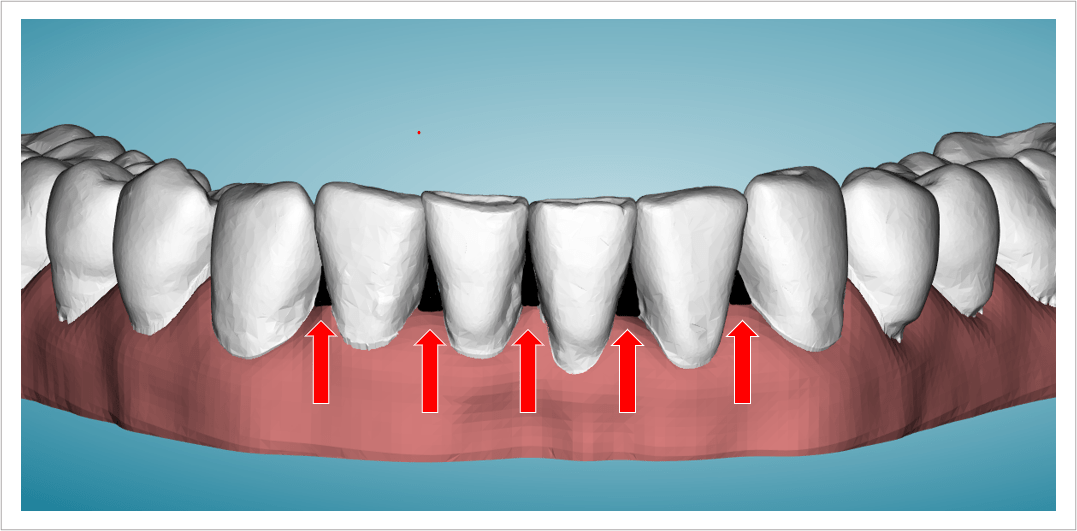What to know about "black triangles"
 22 August 2022 | By Dr. Eric Meyer
22 August 2022 | By Dr. Eric Meyer
Black triangles, also known as “open gingival embrasures,” are the spaces found below the contacts of adjacent. As the gum tissue does not fill in that space it appears as a dark triangle following the taper of the teeth in contact. These tend to be very annoying, as they are not only unesthetic, but they also trap food. Ever feel like you’re always checking your phone camera to see if you have some food between your teeth? Not fun, right?
What causes black triangles?
To get all “science” on you for a moment, the results of a classic 1992 study by Tarnow et al. showed that “when the measurement from the contact point to the crest of bone was 5 mm or less, the papilla was present almost 100% of the time. When the distance was 6 mm, the papilla was present 56% of the time…”
What this means is that you have to have a certain height of bone beneath the contact points of adjacent teeth to support the gum tissue. These pesky spaces are the result of inadequate bone levels between teeth. As bone levels fall around teeth the gumline follows which creates the open embrasure we see as a dark triangle.
The bone level is affected by many things. For example, poor oral hygiene results in poor periodontal health and reduced bone levels. Another example is crowding, or crooked teeth. These teeth generally have lower contact points, that are closer to the bone. When these teeth are straightened the contact points rise, however, the bone level remains the same and a black triangle appears. A reduced periodontium can also be apart of aging. As we get older our bone levels around our teeth may drop and contribute to black triangles.
How do you fix black triangles?
Adding bone between teeth would be the most ideal way, but grafts typically do not lead to a stable results. So, we have to come up with other ways.
- Restoration by a dentist to build up teeth and “fill in” the black triangle with restorative material.
- Orthodontics with Interproximal reduction (or filing) between teeth, which drops the contact point and pushes the gum tissue into the black triangle as the result space is closed.
- Orthodontics to correct the malignment of teeth causing a higher than normal contact point.
- Injections with hyaluronic acid to increase the volume of the gum tissue, which has found to work only temporarily.
- Soft tissue gum graft, which is difficult and may not completely resolve the black triangle.
